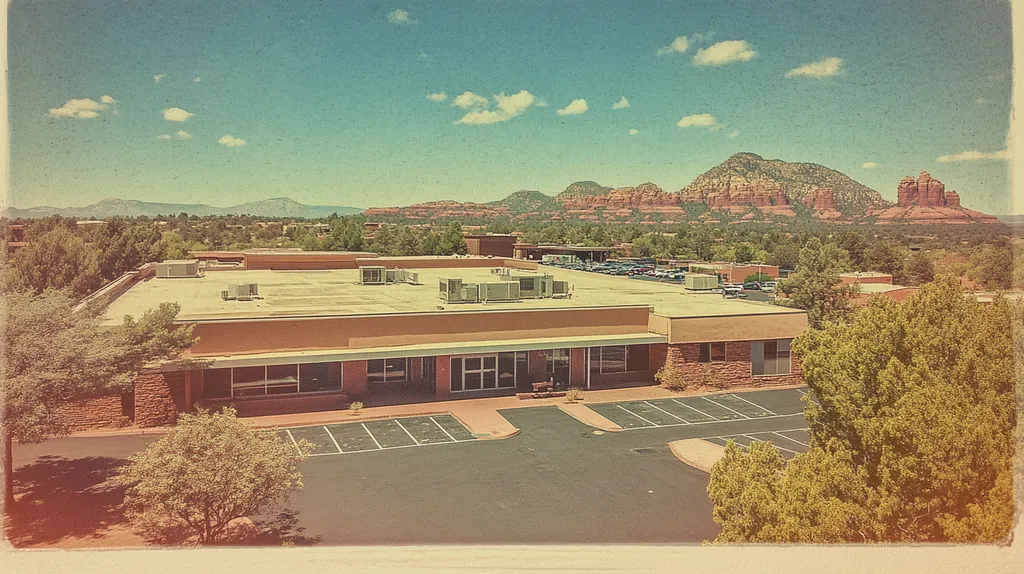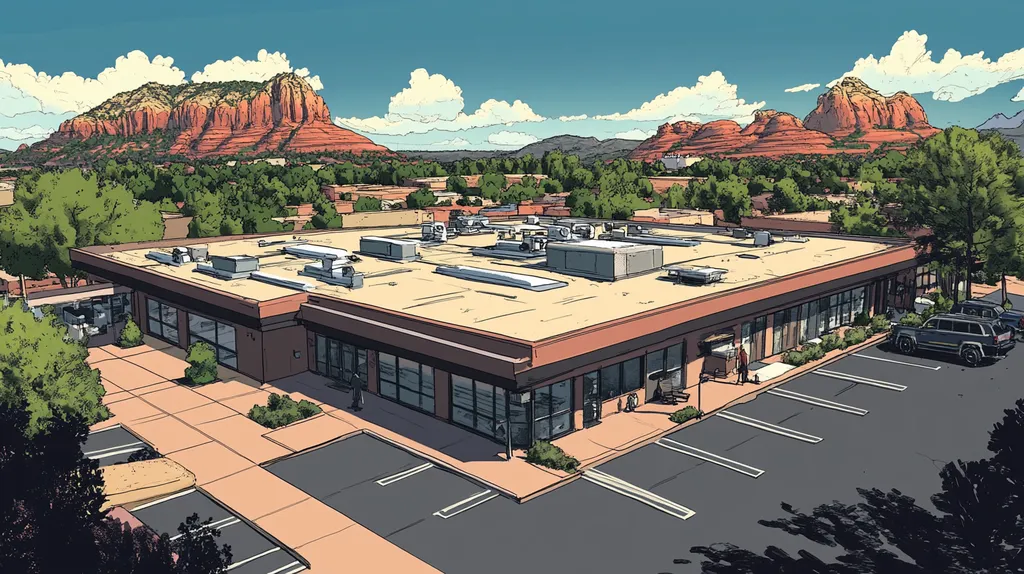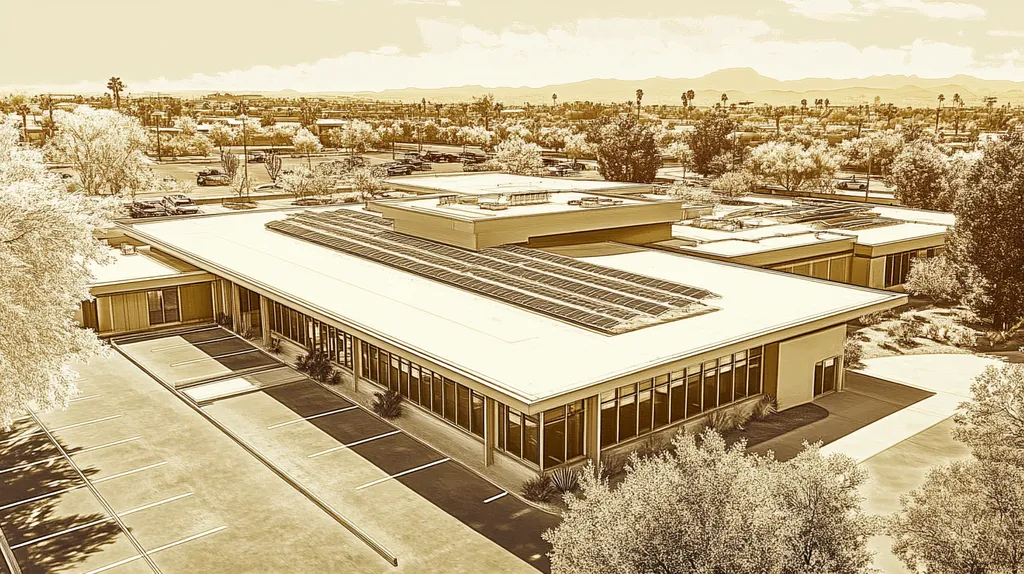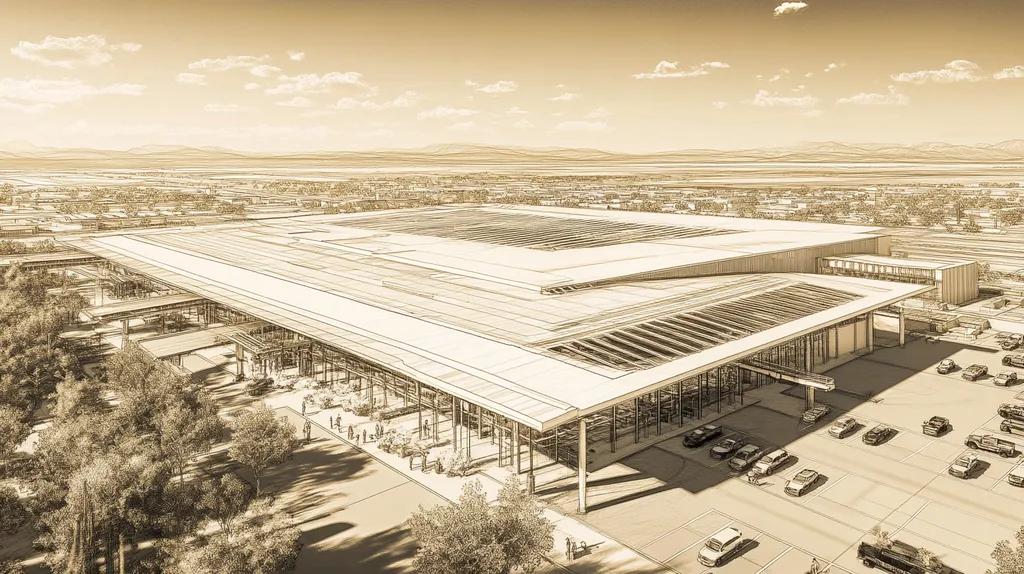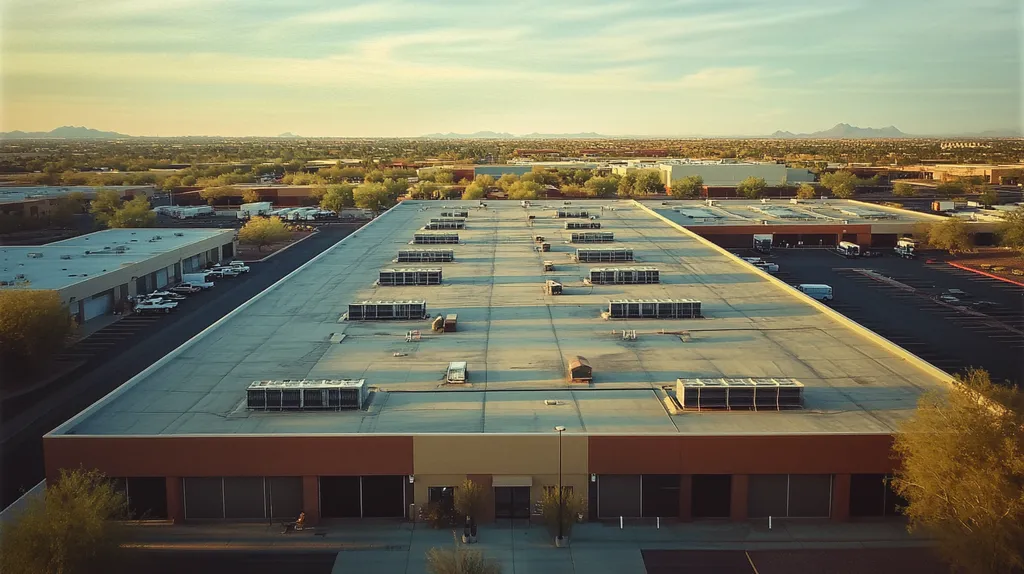Commercial buildings are hemorrhaging millions in energy costs through poorly designed roofs! Dark, heat-absorbing surfaces can reach 180°F during summer peaks, forcing HVAC systems into overdrive and driving utility bills through the ceiling.
Yet most facility managers still don’t grasp how reflective roofing technology can slash cooling costs by 25% or more while extending equipment life and qualifying for substantial rebates.
This comprehensive guide decodes reflectivity science, reveals proven implementation strategies, and provides the essential knowledge needed to transform energy-wasting roofs into powerful cost-saving assets.
SECTION 1: THE BASICS EXPLAINED
Right now, thousands of commercial buildings are hemorrhaging energy through their roofs! Dark, heat-absorbing surfaces create blazing hot rooftops that drive cooling costs through the ceiling.
Urban areas are becoming furnaces, with some commercial rooftops reaching temperatures over 180°F on summer days. This isn’t just uncomfortable – it’s financially devastating for property owners watching their utility bills skyrocket.
Roof reflectivity represents one of the most powerful weapons against this energy waste, yet many facility managers still don’t grasp its incredible potential to transform their buildings’ performance.
What It Is (In Plain Language)
Reflectivity measures how effectively a roof bounces sunlight back into space instead of soaking it up like a sponge. Think of it like the difference between wearing a white shirt versus a black shirt on a scorching day.
The magic lies in the roof’s surface properties – not just color, but specialized coatings and materials engineered to reject solar energy. A cool roof is designed to reflect more sunlight than a conventional roof, absorbing less solar energy, which lowers the temperature of the building just like wearing light-colored clothing keeps you cool on a sunny day.
Engineers measure reflectivity on a scale from 0 to 1, where 1 means perfect reflection and 0 means total absorption. Most conventional dark roofs score a dismal 0.05 to 0.20, while high-performance reflective systems achieve 0.65 to 0.85!
The beauty is that you don’t need a white roof to get incredible results. Advanced cool roof technologies can make even darker-colored roofs reflect heat like champions.
This isn’t just theory – it’s measurable science that translates directly into reduced heat transfer and lower cooling demands (source: U.S. Department of Energy).
Why It Matters (To Your Building)
When roofs absorb massive amounts of solar energy, they become gigantic heating elements that force HVAC systems into overdrive. This creates a vicious cycle of rising energy costs and accelerated equipment wear that devastates maintenance budgets.
The temperature difference is absolutely staggering – reflective roofs can be more than 50°F cooler than conventional roofs during peak summer conditions. That’s the difference between a roof surface at 120°F versus a scorching 170°F!
For large commercial buildings, this temperature reduction translates into immediate energy savings and extended roof lifespan. Heat stress literally cooks roofing materials, causing premature cracking, membrane degradation, and costly repairs.
Building codes and green certification programs are rapidly embracing reflective roofing requirements because the benefits are undeniable. Cities are recognizing that cool roofs combat urban heat islands while slashing energy consumption across entire districts.
The financial impact extends beyond utility bills – reflective roofs often qualify for rebates, tax incentives, and lower insurance premiums. Smart facility managers are leveraging these benefits to maximize their return on investment.
How It Works
Reflective roofs operate on a brilliant principle: intercept solar radiation before it penetrates the building envelope. Instead of allowing sunlight to heat the roof membrane and conduct into the structure below, these systems bounce that energy back to space.
The most effective systems combine high reflectivity with high thermal emittance, creating a double defense against heat buildup. During the day, they reject incoming solar energy, and at night, they rapidly release any absorbed heat back to the cool sky.
Specialized coatings, reflective granules, and engineered membrane surfaces achieve these remarkable properties. The technology has advanced tremendously – modern cool roof materials maintain their reflective performance even as they weather and age.
Installation factors like roof slope, surface preparation, and material selection all influence performance. Steeper slopes actually enhance reflectivity by reducing the angle of solar impact, while proper surface preparation ensures maximum coating adhesion.
Maintenance becomes crucial for sustained performance because dirt, debris, and weathering can gradually reduce reflectivity. Regular cleaning and inspection programs protect this investment and maintain peak energy efficiency for decades.
SECTION 2: PRACTICAL APPLICATIONS
Every single day, thousands of commercial buildings waste massive amounts of energy simply because facility managers haven’t deployed reflective roofing strategically. The difference between a well-planned reflective roof system and a conventional dark roof can mean tens of thousands in annual energy savings.
Smart property owners are discovering that reflectivity isn’t just about slapping white coating on everything – it’s about understanding exactly when and where these systems deliver maximum impact. The most successful implementations combine the right materials with optimal timing and seamless integration with existing building systems.
Common Uses & Examples
The most dramatic results happen on massive flat rooftops where cooling costs dominate operating expenses. Distribution centers, manufacturing plants, and big-box retail stores represent perfect candidates because their expansive roof areas create enormous heat absorption potential.
White TPO and PVC membranes have become the gold standard for these applications, delivering consistent reflectivity values above 0.70. Reflective coatings offer incredible versatility for retrofit projects, transforming existing dark surfaces into energy-saving powerhouses without complete roof replacement.
Warehouses consistently see the most impressive returns because they combine large roof areas with significant air conditioning loads. A single 200,000-square-foot distribution center can slash cooling costs by $15,000 to $25,000 annually with properly specified reflective systems.
Even buildings in moderate climates benefit tremendously during peak summer months when utility rates spike and HVAC systems struggle. The key is matching reflective performance to specific building characteristics and local climate conditions.
Data centers represent a special category where reflective roofs provide critical support for intensive cooling operations. These facilities absolutely cannot afford HVAC failures, making roof-level heat rejection a mission-critical strategy.
When You Need It Most
Emergency situations demand immediate reflective solutions, especially when aging HVAC systems can’t handle increased cooling loads during record-breaking heat waves. Buildings with undersized or inefficient air conditioning equipment desperately need every possible advantage to maintain comfortable conditions.
Geographic location creates urgent priorities – facilities in Phoenix, Miami, or Las Vegas face relentless solar assault that can overwhelm even modern cooling systems. These markets have embraced reflective roofing as essential infrastructure rather than optional upgrades.
Internal heat generation amplifies the need for reflective solutions exponentially. Manufacturing facilities with heat-producing equipment, server farms, and commercial kitchens create double-trouble scenarios where external and internal heat sources combine.
Existing dark roofs reaching 15-20 years old present perfect intervention opportunities before complete replacement becomes necessary. Reflective coatings can extend roof life while dramatically improving energy performance for a fraction of replacement costs.
Budget constraints often create the most compelling case for reflective retrofits because utility savings begin immediately while roof replacement can be deferred for years. A cool roof can benefit a building and its occupants by reducing energy bills by decreasing air conditioning needs, helping older inefficient air conditioners provide enough cooling for today’s hotter summers (source: U.S. Department of Energy).
Interactions With Other Systems
HVAC systems experience profound relief when reflective roofs eliminate massive heat loads from above. Equipment operates more efficiently, experiences less thermal stress, and often exceeds design life expectations because cooling demands stay within optimal operating ranges.
Insulation performance improves dramatically when reflective roofs prevent extreme temperature swings in roof assemblies. Lower surface temperatures reduce thermal bridging effects and help maintain consistent R-values throughout the system.
Building automation systems can optimize performance by integrating roof temperature sensors with HVAC controls. Smart systems learn to anticipate cooling demands based on roof surface conditions and adjust equipment operation accordingly.
However, vapor barrier design becomes absolutely critical in mixed climates where reflective roofs can create unexpected condensation risks. Improperly designed assemblies can trap moisture, leading to insulation damage and structural problems.
Lighting systems benefit from reduced heat island effects around buildings, while landscaping and hardscaping experience less thermal stress. The ripple effects of cooler roof surfaces extend far beyond the building envelope itself.
SECTION 3: KEY TERMINOLOGY DECODED
Right now, thousands of facility managers are making energy-wasting decisions because they’re drowning in confusing technical jargon! The roofing industry throws around terms like albedo, emissivity, and SRI without explaining what they actually mean for your cooling bills.
This terminology maze isn’t just frustrating – it’s financially dangerous. Property owners who misunderstand these critical measurements end up selecting roofing systems that fail to deliver promised energy savings, leaving them stuck with skyrocketing utility costs and underperforming buildings.
The stakes are enormous because every reflectivity specification directly impacts your building’s energy consumption for decades. Master these essential terms and you’ll make confident decisions that slash cooling costs and maximize roof performance!
Essential Terms Explained
Solar reflectance (also called albedo) represents the single most critical measurement for energy efficiency. This value tells you exactly what percentage of sunlight gets bounced back to space versus absorbed into your roof structure.
High solar reflectance is the most important characteristic to understand in terms of how well a cool roof reflects heat from the sun away from a building. Values range from 0 (total absorption) to 1 (perfect reflection), with cool roofs typically achieving 0.65 or higher performance (source: U.S. Environmental Protection Agency).
Thermal emittance measures how effectively your roof releases absorbed heat back to the atmosphere after sunset. High emittance materials cool rapidly once solar heating stops, preventing heat buildup that would otherwise penetrate your building envelope.
Together, these properties create the foundation for energy-efficient roofing systems. A roof with 0.80 solar reflectance and 0.90 thermal emittance will dramatically outperform conventional materials that score 0.10 and 0.90 respectively.
Initial reflectance represents brand-new material performance, while aged reflectance shows how these values change over time. Smart facility managers focus on aged values because that’s the real-world performance they’ll experience for most of the roof’s service life.
Industry Jargon Translated
Solar Reflectance Index (SRI) combines reflectance and emittance into one powerful number that predicts actual roof surface temperatures. This eliminates guesswork by showing exactly how hot your roof will get under intense summer sun.
SRI values typically range from 0 (extremely hot surfaces) to over 100 (exceptionally cool surfaces). Standard black roofing scores around 0, while high-performance cool roofs achieve SRI values of 80 to 110, representing temperature differences of 50°F or more!
Cool roof certification requires meeting specific SRI thresholds that vary by roof slope and climate zone. Steep-slope roofs need SRI values of at least 29, while low-slope installations require 78 or higher for maximum energy benefits.
Urban heat island reduction depends heavily on widespread cool roof adoption because individual buildings contribute to neighborhood-wide temperature increases. Cities are recognizing this connection and implementing cool roof requirements in building codes.
ENERGY STAR qualified roof products meet rigorous performance standards that ensure consistent energy savings across diverse climate conditions. These certifications provide reliable benchmarks for comparing different roofing systems and manufacturers.
Measurement & Units Simplified
ASTM testing standards ensure consistent measurement protocols across all manufacturers and independent testing laboratories. These standardized methods eliminate confusion and allow accurate performance comparisons between competing roofing products.
Cool Roof Rating Council (CRRC) certification provides third-party verification of manufacturer claims with publicly available databases. Property owners can verify actual test results rather than relying solely on marketing materials and sales presentations.
Decimal versus percentage formats create unnecessary confusion, but the math is simple: 0.75 reflectance equals 75% solar reflection. Most technical specifications use decimals, while marketing materials often prefer percentages for easier comprehension.
Spectral selectivity allows advanced materials to reflect visible light while absorbing specific infrared wavelengths. This technology enables darker-colored roofs to achieve cool roof performance without sacrificing aesthetic preferences.
Field testing equipment lets facility managers verify installed performance and monitor long-term degradation. Portable reflectometers provide instant measurements for quality control during installation and periodic maintenance inspections.
SECTION 4: DECISION FACTORS
Right now, countless facility managers are making disastrous roofing decisions because they’re focused on the wrong numbers! They obsess over initial installation costs while ignoring the massive energy penalties that will punish their budgets for decades.
A single poor reflectivity choice on a 100,000-square-foot warehouse can waste $20,000 annually in unnecessary cooling costs – that’s $400,000 over a typical roof lifespan! These seemingly minor specification decisions create compounding financial disasters that devastate operating budgets year after year.
Smart property owners understand that reflective roofing represents a complex optimization challenge where upfront costs, energy performance, and material durability must align perfectly to maximize return on investment.
Cost Considerations
The brutal reality is that installation cost represents just the tip of the iceberg when evaluating reflective roofing systems. While reflective coatings might cost $2-4 per square foot compared to $8-12 for premium reflective membranes, that upfront savings can evaporate quickly through higher maintenance demands and shorter service life.
Energy savings calculations reveal the true financial picture – a high-performance reflective membrane delivering 25% cooling cost reductions can pay for itself in 3-5 years on large commercial buildings. The math becomes even more compelling when factoring in extended equipment life and reduced HVAC maintenance costs.
Utility rebates and tax incentives can slash effective installation costs by 15-30% for qualifying reflective systems. Many facility managers leave thousands of dollars on the table by failing to research available programs before making material selections.
Life-cycle cost analysis consistently favors higher-quality reflective systems because energy savings accumulate relentlessly over decades. A $50,000 premium for superior reflective performance can generate $200,000 in energy savings over 20 years.
Financing options like PACE programs allow property owners to spread reflective roof costs over extended terms while enjoying immediate energy savings. These innovative structures eliminate the capital barrier that prevents many buildings from accessing advanced reflective technologies.
Performance Trade-offs
Maximum reflectivity doesn’t always equal optimal building performance, especially in mixed climates where heating and cooling demands compete throughout the year. Under the same conditions a reflective roof could stay more than 50°F cooler than conventional roofs reaching temperatures of 150°F or more on sunny summer afternoons (source: U.S. Department of Energy).
Dirt accumulation and surface soiling can devastate reflective performance within just a few years without proper maintenance programs. Ultra-white surfaces that start with 0.85 reflectance can drop to 0.60 or lower, eliminating much of their energy-saving advantage.
Climate zone considerations become absolutely critical because reflective roofs that excel in Phoenix might create heating penalties in Minneapolis. Northern buildings need careful analysis to ensure cooling season benefits outweigh potential winter energy increases.
Building-specific factors like internal heat loads, occupancy patterns, and HVAC system efficiency all influence optimal reflectivity levels. Data centers and manufacturing facilities with massive internal heat generation benefit from maximum reflectivity regardless of climate.
Aesthetic constraints often force compromises between peak reflectivity and architectural requirements. Advanced cool roof technologies now deliver excellent performance in darker colors, but property owners pay premium prices for these specialized materials.
Lifespan & Durability Factors
Reflectivity degradation over time can transform energy-saving roofs into disappointing underperformers that fail to deliver projected savings. Cheap reflective coatings might lose 30-40% of their initial performance within 5-7 years, requiring expensive reapplication cycles.
Premium reflective membranes maintain 85-90% of their initial reflectivity after 15-20 years, providing consistent energy performance throughout their service life. This sustained performance justifies higher upfront costs through predictable, long-term energy savings.
Weather resistance becomes paramount in harsh environments where hail, UV exposure, and thermal cycling assault roofing materials daily. Reflective systems must withstand these conditions while maintaining both structural integrity and energy performance.
Warranty coverage varies dramatically between reflective coating systems and engineered membranes, with implications for long-term financial risk. Comprehensive material and energy performance warranties provide crucial protection for major roofing investments.
Maintenance requirements directly impact total cost of ownership because reflective performance depends on surface cleanliness and material condition. Systems requiring frequent maintenance can quickly exceed the operating costs of more durable alternatives despite lower installation prices.
SECTION 5: COMMON CHALLENGES
Right now, thousands of reflective roofs are failing catastrophically because facility managers don’t recognize the warning signs until it’s too late! A single neglected maintenance issue can slash reflectivity by 40% within just two years, transforming energy-saving roofs into heat-absorbing disasters.
The most devastating part is that these problems are entirely preventable with proper knowledge and proactive management. Buildings that invested tens of thousands in reflective systems watch helplessly as dirt accumulation, coating failures, and installation defects destroy their energy savings.
Master these critical challenges and their solutions, and you’ll protect your reflective roof investment while maintaining peak energy performance for decades!
Frequent Problems & Solutions
Surface contamination represents the silent killer of reflective roof performance, with dirt and debris accumulation reducing solar reflectance dramatically over time. Algae growth, atmospheric pollutants, and organic debris create dark surfaces that absorb heat instead of reflecting it back to space.
The contamination process accelerates in industrial areas where airborne particles settle on roof surfaces continuously. A pristine white membrane starting at 0.85 reflectance can drop to 0.50 within three years without proper maintenance protocols.
Coating degradation strikes even premium reflective systems as UV exposure breaks down chemical bonds in surface materials. Cracks, blisters, and delamination create heat pathways that compromise both energy performance and structural integrity.
Regular cleaning programs using appropriate methods and equipment restore reflective performance without damaging delicate surface coatings. Professional restoration involves specialized cleaning solutions and techniques that remove contamination while preserving material properties.
Frequent problems with reflective roofing include dirt accumulation, which reduces reflectivity over time, and damage from foot traffic leading to cracks or punctures, with routine maintenance such as cleaning and recoating preserving reflectivity and preventing costly repairs (source: ENERGY STAR).
Preventive recoating schedules maintain optimal reflectivity by applying fresh reflective layers before significant degradation occurs. These proactive interventions cost far less than emergency repairs or premature roof replacement while sustaining energy savings continuously.
Warning Signs To Watch For
Visual surface changes provide the most obvious indicators of declining reflective performance, with discoloration, staining, or darkening signaling immediate attention needs. Smart facility managers conduct monthly visual inspections to catch these changes before they impact energy costs significantly.
Unexplained increases in cooling costs often indicate reflective roof failure long before visual signs become apparent. Energy bills that spike 15-20% during summer months without obvious causes demand immediate roof performance evaluation.
Physical damage signs like cracking, peeling, or bubbling in reflective coatings create urgent intervention opportunities. These defects allow heat penetration while exposing underlying materials to weather damage and further deterioration.
Temperature monitoring reveals performance degradation through increased roof surface temperatures during peak solar conditions. Infrared thermometers or thermal imaging cameras provide objective measurements that confirm visual observations.
Ponding water or drainage issues create perfect conditions for algae growth and accelerated coating breakdown. Standing water concentrates contaminants while creating moisture conditions that promote biological growth on roof surfaces.
HVAC system strain becomes evident through increased runtime, higher operating temperatures, or more frequent maintenance requirements. Equipment working harder to maintain comfortable conditions often signals reduced roof reflectivity impacting building heat loads.
Preventative Approaches
Scheduled maintenance programs represent the most cost-effective strategy for preserving reflective roof performance throughout the system’s service life. Professional maintenance contracts ensure consistent care while spreading costs predictably across annual budgets.
Semi-annual cleaning cycles remove contamination before it becomes embedded in surface materials, maintaining peak reflectivity with minimal intervention. Spring and fall cleaning schedules prepare roofs for peak summer performance while addressing winter damage.
Material selection focusing on dirt-resistant and self-cleaning properties reduces long-term maintenance demands significantly. Advanced coating formulations resist soiling while shedding contaminants during rainfall events.
Access control systems prevent unnecessary foot traffic that damages reflective surfaces through punctures, scuffs, and coating wear. Designated walkways and equipment platforms protect vulnerable areas while maintaining safe roof access.
Performance monitoring systems track energy consumption patterns and roof surface conditions to identify developing problems before they impact operations. Building automation integration allows real-time alerts when cooling loads exceed expected parameters.
Documentation programs record maintenance activities, performance measurements, and material conditions to optimize future interventions. Historical data reveals degradation patterns while supporting warranty claims and insurance requirements for maximum asset protection.
SECTION 6: NEXT STEPS & RESOURCES
Right now, thousands of facility managers are making reflective roofing decisions based on incomplete information and vague promises from contractors! They’re accepting generic material recommendations without demanding proof of energy performance, warranty coverage, or long-term reflectivity maintenance.
This knowledge gap creates catastrophic financial consequences when reflective systems fail to deliver promised savings. Property owners who invest $100,000 in reflective roofing deserve verified performance data and reliable resources to protect their investment for decades.
The difference between informed decision-making and blind trust can mean the difference between massive energy savings and devastating disappointment!
Questions To Ask Providers
The most critical question every facility manager must ask is: “Can you provide independent third-party test results showing actual solar reflectance and thermal emittance values for your recommended materials?” Contractors who can’t produce CRRC-certified data are waving red flags that should end conversations immediately.
Demand specific warranty coverage for reflective performance degradation over time, not just material defects. Ask exactly what reflectance values are guaranteed after 5, 10, and 15 years of service because this directly impacts your energy savings projections.
Request detailed maintenance requirements and associated costs for preserving reflectivity throughout the roof’s service life. Contractors who claim “maintenance-free” performance are either uninformed or deliberately misleading potential customers.
Insist on life-cycle cost analyses comparing their reflective system against conventional alternatives using your building’s actual energy usage data. Generic savings estimates mean nothing without building-specific calculations based on real utility rates and cooling loads.
Finally, verify their installation crew’s training and certification on reflective roofing systems because improper installation can destroy energy performance permanently. Cool roofs reduce solar heat gain and air conditioning energy use through specialized installation techniques that require proven expertise.
Industry Standards & Guidelines
The Cool Roof Rating Council (CRRC) database represents the gold standard for verifying reflective roofing performance claims across all material categories. This comprehensive directory eliminates guesswork by providing independently tested reflectance and emittance values for thousands of products.
ENERGY STAR qualification ensures reflective roofing products meet rigorous performance criteria that deliver consistent energy savings nationwide. These certified systems qualify for utility rebates and tax incentives while supporting green building certification programs.
ASHRAE Standard 90.1 establishes minimum reflectivity requirements for commercial buildings that vary by climate zone and roof slope. Compliance with these standards ensures code requirements while optimizing energy performance for local conditions.
Local building codes increasingly incorporate cool roof mandates that exceed national standards in heat-prone regions. Cities like Los Angeles, Miami, and Phoenix have implemented aggressive reflectivity requirements because the urban heat island benefits are undeniable.
High thermal emittance enables the roof to shed absorbed heat efficiently, creating measurable temperature reductions that translate directly into reduced cooling costs (source: U.S. Department of Energy). Understanding these technical requirements protects facility managers from non-compliant installations.
Further Learning Simplified
The Department of Energy’s Building Technologies Office provides accessible guides that translate complex reflective roofing science into practical decision-making tools for facility managers. Their cost calculators and climate-specific recommendations eliminate confusion about optimal reflectivity levels.
Manufacturer case studies offer real-world examples of reflective roofing performance on buildings similar to yours, complete with verified energy savings data and installation lessons learned. These detailed analyses provide invaluable insights for planning successful projects.
Professional development opportunities through organizations like BOMA International and IFMA include reflective roofing workshops that keep facility managers current on emerging technologies and best practices. These educational programs provide networking opportunities with peers facing similar challenges.
Industry publications like Building Operating Management and Facilities Management Magazine regularly feature reflective roofing articles that highlight new products, installation techniques, and maintenance strategies. Staying current with these resources protects investments and maximizes performance.
Regional utility company programs often include educational resources and rebate information specific to your service area, helping facility managers navigate local incentive programs while accessing technical support for reflective roofing projects.
The Bottom Line
Commercial buildings waste millions annually through heat-absorbing roofs that force HVAC systems into overdrive during peak cooling seasons.
The science is undeniable: reflective roofing systems can slash cooling costs by 25% or more while extending equipment life and qualifying for substantial rebates.
Yet thousands of facility managers continue making uninformed decisions based on upfront costs rather than decades of energy performance.
The stakes couldn’t be higher – a single poor reflectivity choice on a large commercial building can waste $20,000 annually in unnecessary cooling costs.
Smart property owners understand that reflective roofing represents one of the most powerful weapons against energy waste available today.
The technology exists, the financial incentives are proven, and the implementation strategies are well-established.
The only question remaining is whether facility managers will act decisively to transform their energy-wasting roofs into cost-saving assets before another scorching summer devastates their budgets.
FREQUENTLY ASKED QUESTIONS
Q. What is reflectivity and why is it crucial for my commercial roof?
A. Reflectivity measures how well a roof bounces sunlight away instead of absorbing it. High reflectivity lowers rooftop temperatures drastically, easing the strain on cooling systems. This reduces energy bills and extends your roof’s lifespan by preventing heat-related damage.
Q. How can industrial roofs strategically maximize energy savings?
A. Strategic use means selecting reflective materials tailored to the building’s size, location, and function. Large flat roofs benefit most, especially warehouses and data centers. Timing installations before peak cooling seasons and integrating with HVAC and insulation systems unlocks the highest energy savings.
Q. What key reflectivity terms should facility managers understand?
A. Solar reflectance (albedo) shows how much sunlight is bounced back, while thermal emittance measures heat released at night. Solar Reflectance Index (SRI) combines these for overall cooling performance. Understanding these helps choose roofs delivering true energy savings.
Q. What cost factors impact reflective commercial roof decisions?
A. Initial installation is just one piece; energy savings over years matter most. Durable, premium materials cost more upfront but pay off through reduced cooling costs and extended equipment life. Rebates and financing can make top-tier solutions surprisingly affordable.
Q. What common challenges degrade reflective roofing on commercial roofs?
A. Dirt, debris, and algae buildup darken the surface, slashing reflectivity dramatically. UV damage causes cracking and peeling that worsen heat gain. Proactive cleaning, inspections, and recoating keep roofs efficiently reflecting sunlight and guarding budgets.
Q. What questions should commercial roof providers answer before installation?
A. Demand third-party tested data proving solar reflectance and thermal emittance for recommended materials. Ask about warranties covering reflectivity over time and maintenance protocols. Confirm installer certifications to ensure correct application and sustained energy performance.
Q. How does roof reflectivity affect HVAC system lifespan on industrial roofs?
A. By reflecting solar heat, reflective roofs reduce rooftop temperatures, significantly lowering the cooling load on HVAC units. This lessens their wear and tear, reduces maintenance needs, and can extend equipment lifespan by years. The cumulative savings on repair and replacement costs are substantial for facility managers.

